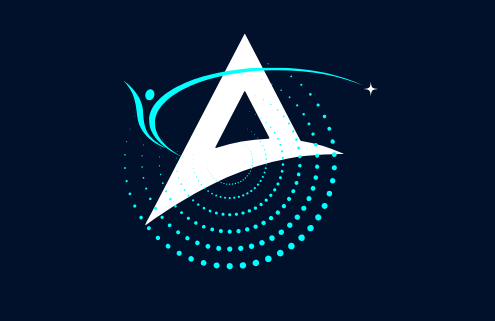Free AI Data Analysis: Introduction to AI in Data Analysis

Why AI Is Revolutionizing Data Analysis
Artificial Intelligence (AI) isn’t just a buzzword anymore—it’s a necessity for businesses and individuals alike who want to make sense of massive amounts of data. Just imagine trying to analyze thousands of rows of sales data in a spreadsheet. Painful, right? That’s where AI steps in. It can not only process huge datasets but also uncover patterns, predict future trends, and provide insights you might never notice on your own.
With tools powered by machine learning, natural language processing, and automation, AI takes data analysis to a whole new level. The real magic happens when AI systems “learn” from historical data. Whether it’s sales predictions, customer segmentation, or fraud detection, AI does the heavy lifting. It cuts the time spent on data prep and analysis from hours to minutes, often with more accuracy.
Moreover, AI doesn’t require you to be a coding genius. Modern tools use drag-and-drop interfaces and visual workflows that even beginners can use effectively. From automating tedious data cleaning tasks to recommending actions based on insights, AI is flipping the traditional data analysis process on its head.
Benefits of Using Free AI Data Analysis in Data Science
So, what’s in it for you? A lot, actually.
-
Speed – AI processes data faster than any human could.
-
Accuracy – By reducing human error, Free AI Data Analysis improves analysis precision.
-
Automation – Say goodbye to repetitive tasks like data formatting or running the same models over and over.
-
Scalability – Whether you’re analyzing a few hundred rows or millions, AI can scale effortlessly.
-
Decision Support – AI doesn’t just show data; it helps you act on it.
The best part? Many of these AI tools are now completely free. This means you don’t need a six-figure budget to start leveraging the power of AI in your data projects.
The Rise of Free AI Data Analysis In 2025
Open Source Movement and Democratization of AI
We’re living in the age of democratized data science. Thanks to the open-source movement and the collaborative tech community, cutting-edge tools that were once behind corporate paywalls are now available to everyone—for free.
Platforms like GitHub, TensorFlow, and Hugging Face have empowered developers and data scientists to share models, tools, and scripts without a price tag. Even tech giants like Google and Microsoft offer powerful tools for free under certain tiers. This shift has leveled the playing field, allowing small businesses, startups, students, and freelancers to access the same tools used by Fortune 500 companies.
And it’s not just about free access—it’s about freedom. Open-source tools can be modified, extended, and customized to fit unique needs. Whether you’re working on a school project or launching a new product, free AI tools give you the flexibility to innovate without limits.
How Free AI Data Analysis Compete with Premium Platforms
You might be wondering: can a free tool really stand up to a paid one? Absolutely. While premium tools often offer more advanced features and better support, many free AI platforms provide 80–90% of what most users need.
Take Google Colab, for example. It’s a free, cloud-based version of Jupyter Notebook that allows you to run Python code with GPU support. You get access to a powerful computing environment without having to install anything on your machine.
Or consider KNIME and RapidMiner—tools that offer full-fledged visual data science workflows without charging a dime. They’re perfect for data wrangling, training machine learning models, and creating visual reports.
The truth is, many free tools today are more robust than paid ones were just five years ago. They might have limitations in storage or concurrent users, but for many projects, they’re more than sufficient.
Top Free AI Data Analysis in 2025
1. Google Colab – Your AI Playground
Google Colab is like the Swiss Army knife of data science tools. It’s a cloud-based platform where you can write and execute Python code, train machine learning models, and even use GPU/TPU acceleration—for free.
Key Features:
-
Run Python in the browser.
-
Free access to GPUs and TPUs.
-
Pre-installed with major libraries (Pandas, NumPy, Scikit-learn, TensorFlow).
-
Easy to share and collaborate.
Colab is especially beginner-friendly. You don’t need to install anything—just open a new notebook and start coding. Want to analyze a dataset? Import it from Google Drive, GitHub, or a URL in seconds. Need visualizations? Matplotlib and Seaborn are already available.
2. KNIME – Visual Workflow Power
If you’re a visual thinker, you’ll love KNIME. It lets you build data pipelines and AI models by dragging and dropping nodes—no coding required (unless you want to).
Why KNIME Rocks:
-
Open-source and 100% free.
-
Ideal for data prep, cleaning, and ML modeling.
-
Integrates with Python, R, TensorFlow, and more.
-
Huge community and plugin library.
KNIME is perfect for building end-to-end data science workflows. Want to import a dataset, clean it, train a model, and export results? You can do all of that visually in one workflow canvas. It’s great for teams too—you can share workflows or even schedule them to run automatically.
KNIME doesn’t cut corners. It’s used by enterprises and researchers alike. The only catch? It has a bit of a learning curve, but once you get used to it, you’ll never go back.
Take Your Business to the Next Level with Amexbrands
Get your free Website Manual Audit now!
3. RapidMiner – Drag & Drop Machine Learning
RapidMiner is another powerhouse in the world of visual data science tools. It offers an intuitive, no-code interface that lets users perform advanced analytics, from data preprocessing to building machine learning models, without writing a single line of code.
Core Features:
-
Drag-and-drop functionality.
-
Extensive support for data cleansing, transformation, and model training.
-
Built-in templates for classification, regression, clustering, and more.
-
Integration with R, Python, and various databases.
What makes RapidMiner stand out is its ease of use combined with powerful capabilities. It’s perfect for beginners and business analysts who need insights fast, but it also scales for data science pros working on complex models.
4. Orange – Interactive Data Visualization
Orange is as fun as its name sounds—especially if you enjoy data visualization and exploration. Built for both newbies and pros, this open-source toolkit is known for its ease of use and colorful, widget-based interface.
Highlights of Orange:
-
Modular, visual programming.
-
Built-in widgets for data visualization, modeling, and evaluation.
-
Support for text mining, bioinformatics, and time series analysis.
-
Extendable through Python scripting and plugins.
Orange is often used in educational settings because it’s so interactive. You can load data, visualize it instantly using scatter plots or heatmaps, and start building predictive models without touching code.
5. Weka – Classic Tool That Still Works
Weka might be one of the oldest AI tools on this list, but it’s still a fan favorite in academia and among data science veterans. Developed at the University of Waikato in New Zealand, Weka offers a collection of machine learning algorithms for data mining tasks.
Why Weka Still Matters:
-
Standalone software with GUI.
-
Ideal for classification, regression, and clustering.
-
Comes with prebuilt algorithms—no need to install extra packages.
-
Lightweight and fast.
Weka is great for exploring datasets quickly. You can load a CSV file and run a classification algorithm within minutes. It’s especially useful for students or researchers working on experimental models.
6. IBM Watson Studio Free Tier
IBM Watson Studio is like having a full data science team in your browser. While its premium offerings are enterprise-level, IBM also provides a generous free tier that includes many of the same tools.
Free Tier Perks:
-
Use of Jupyter Notebooks, SPSS Modeler, and AutoAI.
-
Collaboration tools for team projects.
-
Preloaded datasets and sample projects.
-
Watson’s famous Natural Language Processing capabilities.
The AutoAI feature alone is worth exploring—it automates data preprocessing, model selection, and hyperparameter tuning. For newcomers, it simplifies the complex process of building high-performing models.
7. Microsoft Azure ML Studio Free AI Data Analysis
Microsoft Azure ML Studio combines cloud computing power with an intuitive interface for building machine learning models. Its free tier lets you access a limited but powerful version of the full Azure ML experience.
Key Benefits:
-
Drag-and-drop visual environment.
-
Pretrained models and extensive documentation.
-
Built-in support for Python and R scripts.
-
Strong cloud integration with Azure services.
Azure ML Studio is best for those who are planning to scale their projects later. The free version gives a solid foundation, and once you’re ready, upgrading to a paid tier unlocks even more capabilities.
Comparing Features of the Top Free AI Data Analysis
Functionality Overview
To help you pick the best tool, let’s break down how these tools compare on key features:
| Tool | Coding Required | Best For | Cloud-Based | Visual Workflow | Free Tier Limits |
|---|---|---|---|---|---|
| Google Colab | Yes | Python-based ML Projects | Yes | No | Session time & RAM |
| KNIME | No | Data wrangling & modeling | No | Yes | No enforced limits |
| RapidMiner | No | ML for business users | No | Yes | 10,000 data rows |
| Orange | No | Education, data viz | No | Yes | None |
| Weka | No | Academic research | No | Partial | None |
| IBM Watson Studio | Partial | Enterprise-grade ML | Yes | Yes | Storage & compute caps |
| Azure ML Studio | Partial | Cloud deployment projects | Yes | Yes | Storage & compute caps |
Strengths and Limitations
Each tool has its unique strengths:
-
Google Colab: Ideal for code-heavy AI projects. Great if you’re comfortable with Python.
-
KNIME & RapidMiner: Perfect for professionals who prefer GUI-based workflows without coding.
-
Orange: Engaging and easy for visual learners.
-
Weka: Time-tested and lightweight.
-
IBM Watson & Azure: Excellent for scalable enterprise solutions.
However, limitations exist. Free versions may restrict storage, concurrent projects, or computational resources. If you’re working with large datasets or high-demand models, these may become bottlenecks. But for most users, especially those just starting out, the free options are incredibly powerful.



